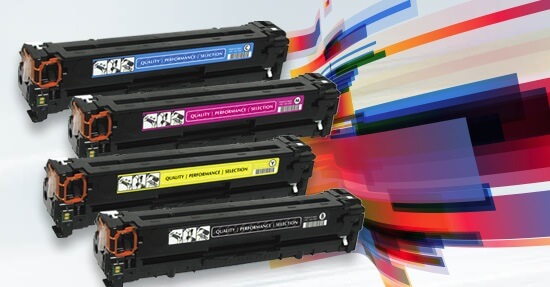Clover Warns of Risks of New-Built Toner Cartridges
 Clover Imaging Group (CIG) has released a new white paper detailing the risks involved with non-OEM new built toner cartridges.
Clover Imaging Group (CIG) has released a new white paper detailing the risks involved with non-OEM new built toner cartridges.
Luke Goldberg, EVP Global Sales and Marketing at CIG, commented: “We would like office equipment suppliers and managed print service vendors to be aware of the risks that are involved with purchasing newly built compatible cartridges,. CIG strongly believes that our remanufactured cartridges are better quality and more environmentally sustainable than newly built compatible cartridges while respecting OEM intellectual property rights. This paper not only tells our side of the story, it backs that story up with historical examples and independent third-party findings.”
The white paper explains that while third-party toner provides cost savings, new-built compatible cartridges expose customers to various risks.
These risks largely fall into three broad categories – legal concerns, quality concerns, and environmental concerns- for instance, newly built compatibles may not provide good performance.
Perhaps the most important warning for dealers is the potential culpability for intellectual property violations stemming from the use of newly built compatible cartridges. Clover says that OEM’s are increasingly focusing enforcement efforts not just on manufacturers and large wholesalers, but also on dealers and vendors selling newly built compatible cartridges online.
Legally, notes Clover, there is a key difference between remanufacturing an existing cartridge to extend its useful life, and simply building and selling a brand-new cartridge that replaces the original. That difference is based on the consumers’ right to repair the products they own. In the landmark case Impression Products vs. Lexmark International, the United States Supreme Court upheld the rights of aftermarket remanufacturers to repair the print cartridges they purchase. In contrast, OEMs are aggressively bringing patent-infringement legal actions against sellers of new-built cartridges and are either winning those suits or extracting settlement terms that ban the infringing new builds.
Addressing quality concerns, the white paper notes that CIG uses independent testing to ensure that CIG’s remanufactured cartridges hold up to the performance standards of their OEM equivalents. In one cited test, the average continuous yield of CIG tested cartridges exceeded the OEM stated yields across all product categories.
In contrast, several OEMs have released independent test results consistently demonstrating the inferiority of newly built compatible cartridges. As these tests show, when the primary goal is low-cost, quality suffers.
The final area of concern addressed by the white paper is the poor environmental performance of new-built compatible cartridges. Because newly built compatible cartridges require completely new plastics, metals and other materials, Clover says they are inherently less environmentally friendly than remanufactured cartridges that reuse the original OEM cartridge.Clover also notes that a study conducted by HP Inc. found that compatible cartridges exceeded numerous EPEAT emission limits, including those relating to styrene emissions, particle production, and volatile organic compounds.
Dealers and consumers may read more about risk and reward in the world of print by reading the latest CIG white paper at https://www.cloverimaging.com/CIG-white-paper

You must be logged in to post a comment.